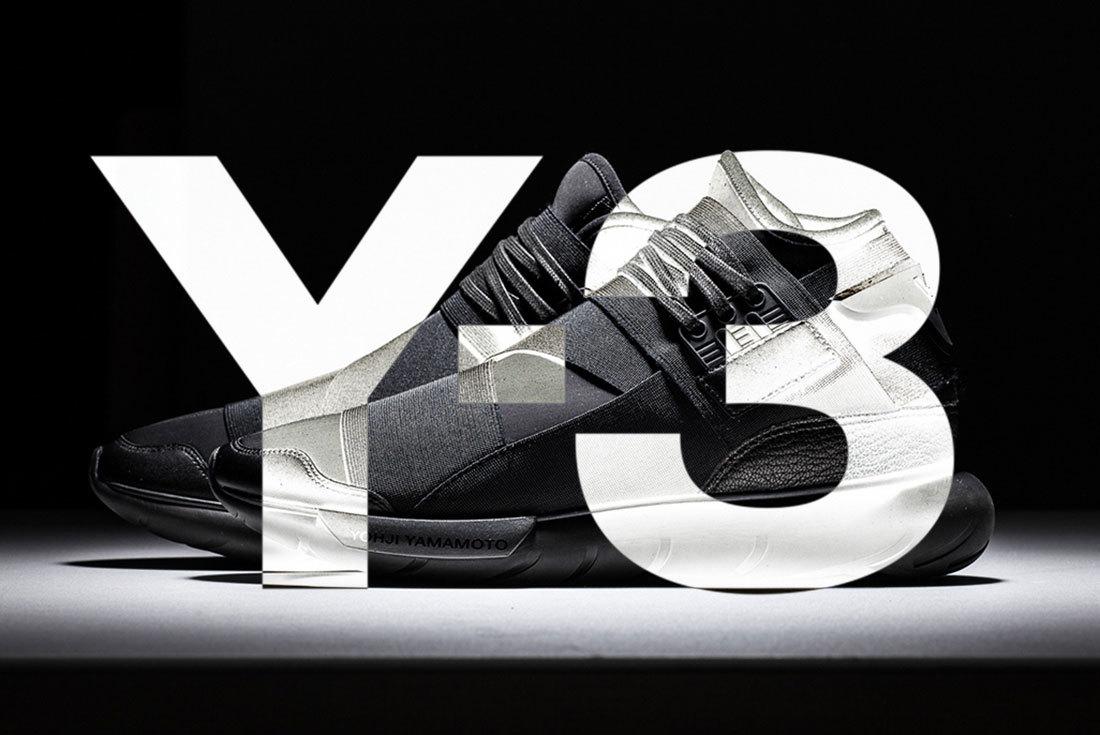Material Matters: The Influence of adidas Y-3
It’s easy to let fade into the background without quite realising the influence that s designs have made on the present-day scene. Especially nowadays as the lines between high-fashion and sneakers continue to blur. The modern blend of fashion and athletics was unheard of when the Japanese designer signed with adidas in 2003, but it’s since become such a staple that we regularly take it for granted or overlook its significance entirely. Yamamoto’s partnership with adidas paved the way for designers like , and to redefine the relationship between fashion and sneakers. Yohji walked, so that designers like and could run.
At the turn of the millennium, Yamamoto found himself bored and fed up with the way the industry was going. Around that time, he was struck by a new ‘trend’ or sorts emerging in NYC: businessmen and women had taken to pairing their corporate attire with sneakers for their daily commute. Inspired afresh, Yamamoto sprang into action. As a fashion designer looking to tee up with a sportswear company in the early 00s, who else would you call but ? At first, Yamamoto intended merely to borrow some sneakers to use in his Fall/Winter 2000/01 runway show in order to recreate the style he’d seen on the Big Apple’s streets. But Nike weren’t interested. They politely informed Mr Yamamoto that they had no intention of ever getting involved with the fashion market, for they were a purely sportswear brand.
Far from discouraged by his early stumble, Yamamoto looked back to the streets, this time of Tokyo, where he was hit with a wave of Three Stripes. Unlike the Swoosh, adidas jumped at the opportunity to work with him and a partnership was quickly formed. The collaboration was a complete shock to the more conservative industry of the time, but adidas were prepared to give the avant-garde designer full creative control of the first ever Y-3 (Y for Yohji Yamamoto, 3 for Three Stripes) range, which debuted in 2003.
The early collections emphasised athletic elements, with the fashion designer’s signature avant-garde gothic flair. Compared to mainline Yohji, Y-3 boasted more accessible price points, allowing a wider audience to experience the fresh, innovative collection. Chunky Three Stripe motifs and large logos stood out against classically based pieces such as blazers and trousers. Yamamoto also took to mimicking his signature pieces such as the Balloon Pants and recreating them with a sportswear-adjacent flair. Team Trefoil’s legendary items like their tracksuits also experienced the Yohji treatment. It was this moment that helped kick start the athleisure phenomenon that has since become the norm today. Over the subsequent years, the edgy collaborative line became a huge success, especially among creative types. In 2008, Y-3 opened its first standalone store in NYC, and the brand’s high-priced footwear maintained heavy demand globally.
Many of Y-3’s earlier sneakers such as the Honja Low and Tokio Trainer showed obvious archival adidas influences, but in 2013, the line unleashed a new kind of beast: the . The bulbous sock-like sneaker was an instant hit with the burgeoning goth-ninja techwear set, thanks to swathes of neoprene and a series of sleek elasticated straps. The Qasa’s influences weren’t immediately obvious to those playing along at home until a similarly styled general release made a call back that couldn’t be missed.
The bulging EVA sole was inspired by an old adidas concept that never quite took off, known as . In the early days, the name made sense, as the shoes featured tubes of air, like those inside a tyre that could be inflated and deflated with some handy valves. The modern revival of the Tubular line took the look of the Qasa and linked it with the crude pneumatic tech of the early 90s. The resulting sole – originally compared to a hovercraft skirting – and the unusual sock-like upper were a winning combination.
Before long, adidas released their Tubular reboot and it was a massive success. Designs such as the Tubular Runner and Tubular X sold like hotcakes and played as much a part in building that era of adidas’ street cred as the technology that was introduced around the same time. The bulging soles and slim-fitting structures continued to echo through the adidas designs in the years that followed.
As the masses caught up to each trend pioneered by Y-3, Yohji’s designs continued to push the boundaries of conventional sneaker understanding. Stylistically, the Y-3 Response TR pre-empted the rise of the outdoors aesthetic, which took off in 2015, while the Kohna was leaps ahead of the split-sole trend that’s bubbling away right now. Y-3 ranges have played host to a number of innovative ideas such as the laser-cut uppers of 2017’s Y-3 Sport models, and even the cutting-edge 4D-printed sole tech that was first made available to the public as a Y-3 release.

The Ekika presented a true spectacle of sole design based on an idea from the defunct SLVR collection. But where the zig-zaggy sole looked ungainly against the mesh SLVR upper, the Y-3 version pairs it perfectly with an avant-garde moc-styled bootie.
Despite lower hype around the brand in recent years, the trailblazing subdivision of adidas continues to invent and reinvent under the guidance of the visionary Yohji Yamamoto. Back in 2023, the brand celebrated 20 years, and they are still coming correct with a plethora of innovative concepts like the Gendo. For the 2024 , Y-3 also had a hand in designing the Japanese uniforms. adidas seems to be putting some steam back into their Y-3 label in recent months, with the brand once again hosting a strong presence.
We think it’s time for a major resurgence!
Find out everything that happened at Paris Fashion Week Men's AW24 , and read about Y-3's most influential sneakers .
